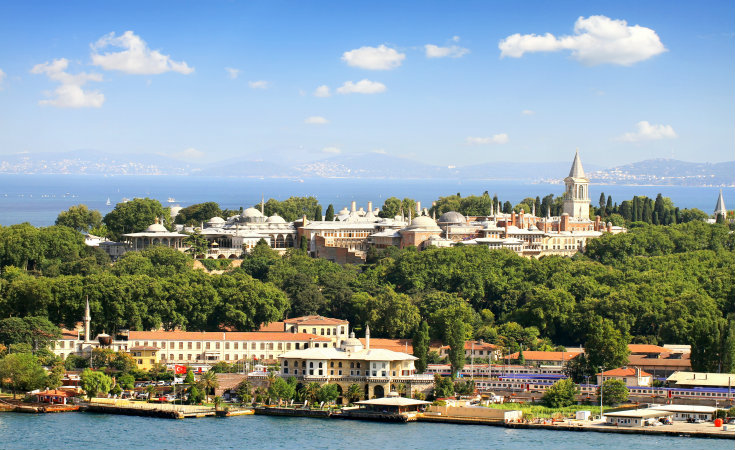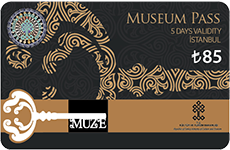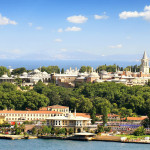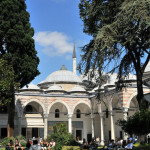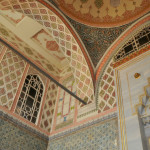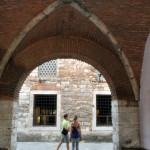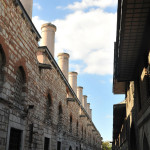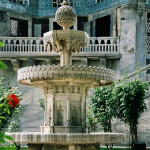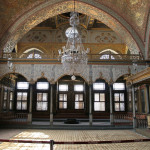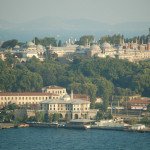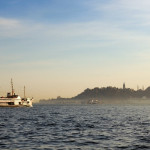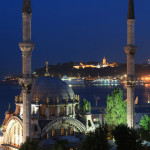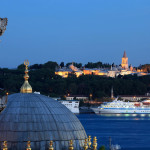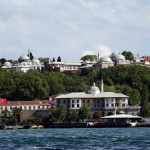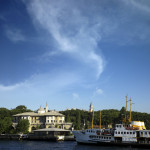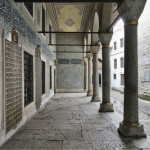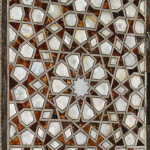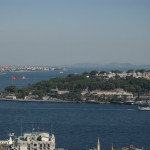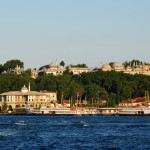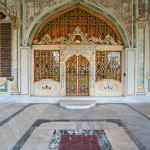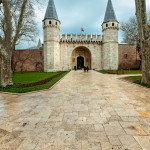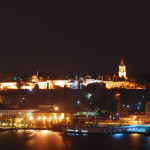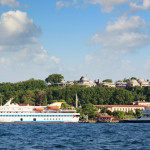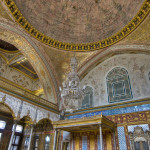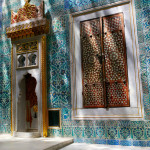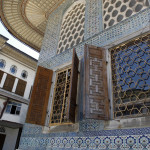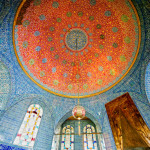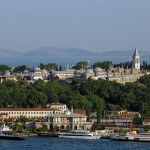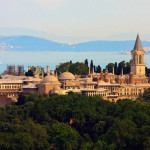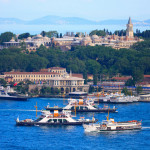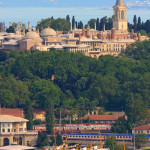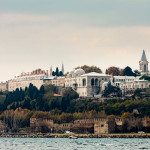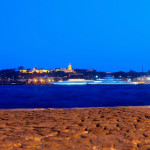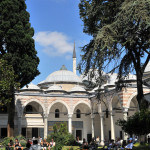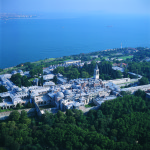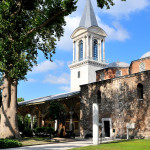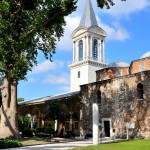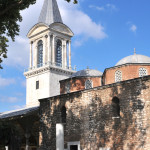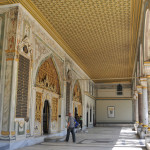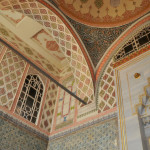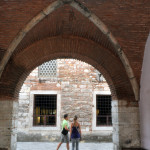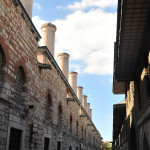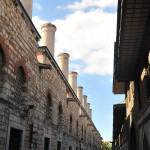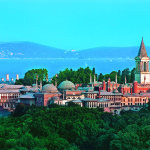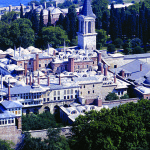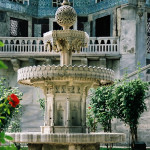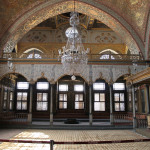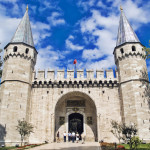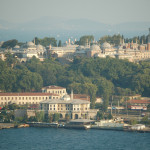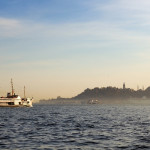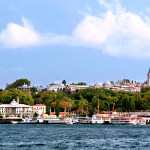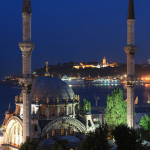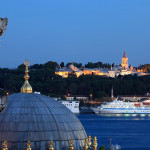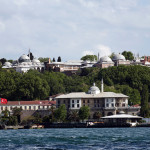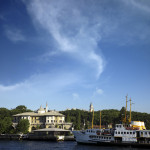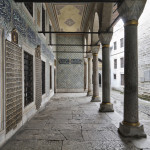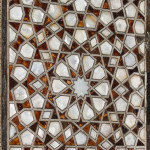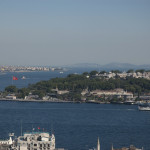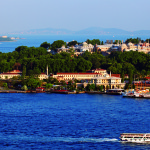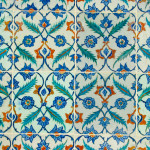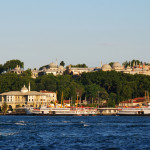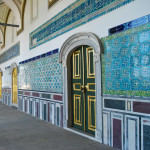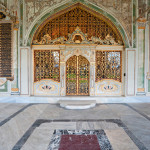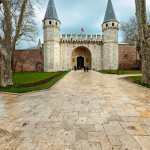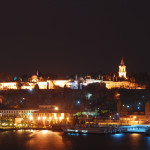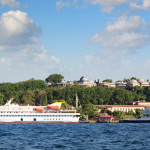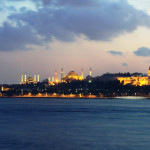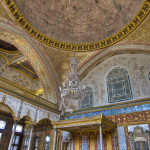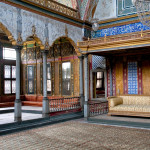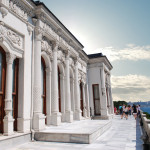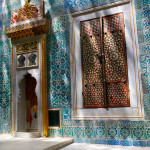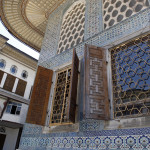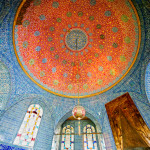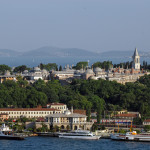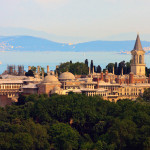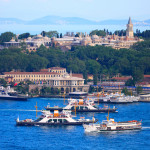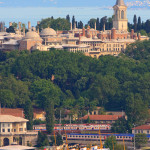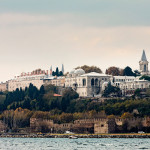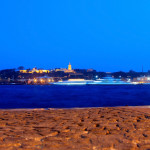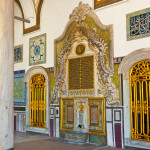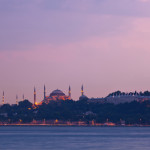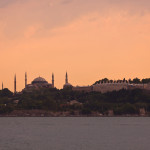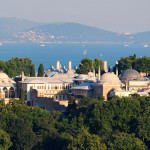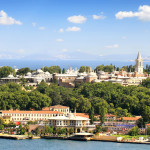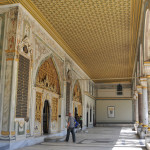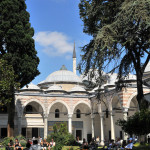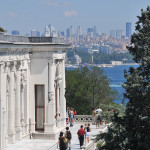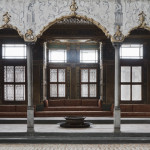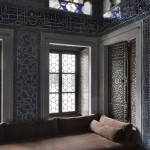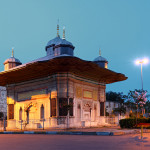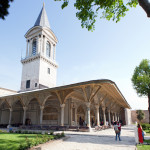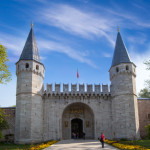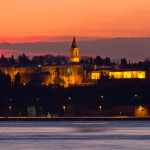Built by Mehmet the Conqueror between 1460-1479 and then the object of a number of later additions, The Topkapı Palace Museum (Topkapı Sarayı Müzesi) – whether for its architecture or for its important role in history – is one of the most visited museums in Istanbul.
From its construction until the 19th century, the palace was both home of the Sultans and palace functionaries and all important state business was carried out there. At the beginning of the 1850’s the Sultan and his family moved to Dolmabahçe, Çırağan and Yıldız Palace as Topkapı Palace was no longer sufficient for their needs. Only the Imperial Treasury, the Sacred Relics and the Imperial Archives continued to be housed on the grounds.
After the Ottoman Empire, the palace was converted to a museum in 1924.
The palace is spread over a 45,000 square meter area and is comprised of apartments, the official residences of state functionaries, and pavilions built around a series of gardens and courtyards.
Topkapı is one of the richest museums in the world and home to over 80,000 objects presented in regularly updated exhibition spaces. It is divided between Courtyards I, II, III and IV and the Treasury and Harem.
First Court
Topkapı grew and changed over centuries but the palace’s four-courtyard plan remained the same. The Ottoman Empire followed a practice of keep the monarch apart the people. The first court was open to everybody as the second court was only open to people on imperial business. The court third and fourth one only to the imperial family and palace staff. The first court is located behind Hagia Sophia and known as the Court of the Janissaries.
Second Court
Palace’s Second Court was used for the business of running the empire. Second Court can be accessed from the Middle Gate (Ortakapı or Bâb-üs Selâm) which was constructed by Süleyman the Magnificent in 1524. At the imperial times, only the Sultan and the mother of the reigning Sultan were allowed through the Middle Gate.
Third Court
This main gate, known as the Gate of Felicity or Gate of the White Eunuchs and it was the entrance into the Sultan’s private domain. Inside the Gate of Felicity is the Audience Chamber, which was constructed in the 16th century and renewed around 18th century. At the imperial times, this Audience Chamber was used by Important officials and foreign ambassadors for manage business of the state.
Fourth Court
The northeastern part of the palace is occupied by pavilions which are called the Tulip Garden or Fourth Court. Up the stairs at the end of the Tulip Garden are three of the most captivating buildings of the palace, joined by a marble terrace and a beautiful pool.
Hagia Irene
Incorporated into the grounds of Topkapı Palace after the conquest of Istanbul, Hagia Irene is located at the back yard of Topkapı Palace. Treasury The Treasury is one of the highlights of Topkapı Palace with its vast collection of objects from imperial ages and breathtaking Istanbul views from its terrace. The building was constructed by Sultan Mehmet the Conqueror in 1460 and has always been used to store works of art and treasure. Harem “Harem” is a noun derived from the Arabic verb “haram” which mean to prohibit, forbid, or make unlawful and means that which is forbidden or that which is kept safe. At Topkapı Palace, the Harem Apartments were where the sultans lived together with their families. It was home for sultan’s mother and his wives; and the rest of his family, including children and their servants. The Harem contains more than 300 rooms, nine hammams, two mosques, a hospital, dormitories and a laundry. The complex as it exists today was shaped over the course of time, through numerous restorations and expansions. The basic plan of the Harem consists of consecutive courtyards surrounded by and interspersed with living quarters, rooms, pavilions, and service buildings. A must-see for anyone interested in the high culture of Ottoman Empire, it is recommended that at least three hours should be set aside for a proper visit.














